Sean Bienvenidos Japonistasarqueológicos, A Una Nueva Entrega, Esta Ocasión Nos Trasladamos Al Antiguo




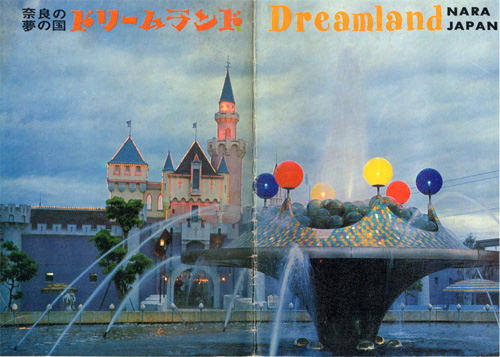


Sean bienvenidos japonistasarqueológicos, a una nueva entrega, esta ocasión nos trasladamos al antiguo solar donde se localizaba el antiguo parque de atracciones Nara dreamland. - Esperó que os guste y nos vemos en próximas publicaciones, que pasen una buena semana.¿Lo conocían? - 今回は、旧奈良ドリームランド遊園地があった場所に移動して、新たな回をお届けします。 - あなたがそれを好きで、今後の出版物でお会いすることを望みます、良い一週間を過ごしてください、あなたはそれを知っていましたか? - Welcome to a new installment, this time we move to the old site where the former Nara dreamland amusement park was located. - I hope you like it and see you in future publications, have a good week, did you know it?
More Posts from Noticiasarquelogicasjaponesas and Others

Welcome, japonistarchaeologists, to another chapter of this series in which we will move to the Yayoi period in the middle of prehistory, which would be equivalent to the Neolithic. It would be the continuation of the Jomon period but more sophisticated. - The Yayoi period takes place in the year 300 BC until 250 BC, which would be equivalent to the 4th and 3rd centuries. During this period, rice cultivation will arrive from the Korean peninsula and will arrive from the south through the Kyushu peninsula, where we can currently find one of the great archaeological sites of this period in the Saga prefecture. First of all, we have already talked about the Paleolithic in previous chapters. When I can, we will finish it to be able to cover in more depth the Jomon, Yayi, Kofun or protohistoric period until the formation of the Japanese state. - Sewerage in Neolithic Japan? Surely we think of systems such as those of Sumeria, Rome and China, but of course it was a fairly rudimentary but effective system that was used for rice irrigation, for defense and for the health of the villages. It should be noted that in the Yayoi period the clans emerged, which is why the tribal wars of the Neolithic began to emerge due to the fight for resources to see which clan had much greater power and resources. Once this is clarified, as I said before, it would be a very rudimentary technology, but very advanced for the time. Is it still in use? Yes, since from this period until today the Japanese have continued to use it and improve it with regard to the sewage system mentioned above. That is why when the Europeans arrived for the first time they were surprised by the high level of hygiene. - In future publications we will talk about this period and those already mentioned above. I will bring you archaeological news about the remains of these settlements and the location of the drainage system and what the most important sites are. All this and much more. See you in future publications on archaeology and Japanese history and geography until next time.



Sean bienvenidos fanáticosjaponesitas a una nueva entrega de Arqueología, en esta ocasión hablaremos de uno de los mayores monumentos del mundo asiático que se localiza en la ciudad de Nara, prefectura de Honshu. - Dicho esto, pónganse cómodos que comenzamos, tengo el placer de presentaros al templo budista Todaiji, es uno de los más grandes y data de los años: (710-784) después de nuestra era. El día 15/4/2022 tuve el placer de enterarme de que se habían encontrado restos de un líquido localizado en la pared exterior del Gran Salón del Buda. - Dicho líquido alberga el rango de 70 cm a 80 cm de ancho de la pared, dicho acto me duele igual que un japonés, ya que esto es mancillar el buen nombre de la religión budista, siendo la segunda más procesada en todo el país tras el sintoísmo además siendo uno de los edificios más icónicos de japón. - La policía está investigando a través de las cámaras de seguridad, gracias al gamberro, que posiblemente sea un turista que no tiene ni idea de lo que está viendo. Consejo si van a visitar un monumento háganme él por favor de informarme previamente. - Un saludo, por la gloria del emperador y de Amaterasu, nos despedimos hasta una próxima publicación. - Japanese fans are welcome to a new installment of Archeology, this time we will talk about one of the largest monuments in the Asian world that is located in the city of Nara, Honshu prefecture. - That said, make yourself comfortable, let's begin, I have the pleasure of introducing you to the Todaiji Buddhist temple, it is one of the largest and dates from the years: (710-784) after our era. On 4/15/2022, I was pleased to learn that traces of a localized liquid had been found on the outer wall of the Great Buddha Hall. - Said liquid houses the range of 70 cm to 80 cm wide of the wall, said act hurts me just like a Japanese, since this is tarnishing the good name of the Buddhist religion, being the second most processed in the whole country after the shintoism also being one of the most iconic buildings in japan. - The police are investigating via security cameras, thanks to the thug, who is possibly a tourist who has no idea what he is seeing. Advice if you are going to visit a monument, please let me know beforehand. - A greeting, for the glory of the emperor and Amaterasu, we say goodbye until a next publication. - 日本のファンは考古学の新作を歓迎します。今回は、本州県奈良市にあるアジア世界最大のモニュメントの1つについてお話します。 - とはいえ、快適に過ごしましょう。まずは、東大寺を紹介できることをうれしく思います。東大寺は、私たちの時代からの最も大きな寺院の1つです。 2022年4月15日、大仏殿の外壁に局所的な液体の痕跡が見つかったことを知り、うれしく思いました。 - この液体は壁の幅70cmから80cmの範囲にあり、これは仏教の名を傷つけているので、日本人のように私を傷つけます。これは神道に次いで全国で2番目に処理されています。日本で最も象徴的な建物の1つです。 - 警察は、彼が何を見ているのかわからない観光客である可能性のある凶悪犯のおかげで、防犯カメラを介して調査しています。記念碑を訪れる場合のアドバイスは、事前にお知らせください。 - 天照大神と天照大神の栄光にご挨拶、次の出版までお別れを申し上げます。日本のファンは考古学の新作を歓迎します。今回は、本州県奈良市にあるアジア世界最大のモニュメントの1つについてお話します。 - とはいえ、快適に過ごしましょう。まずは、東大寺を紹介できることをうれしく思います。東大寺は、私たちの時代からの最も大きな寺院の1つです。 2022年4月15日、大仏殿の外壁に局所的な液体の痕跡が見つかったことを知り、うれしく思いました。 - この液体は壁の幅70cmから80cmの範囲にあり、これは仏教の名を傷つけているので、日本人のように私を傷つけます。これは神道に次いで全国で2番目に処理されています。日本で最も象徴的な建物の1つです。 - 警察は、彼が何を見ているのかわからない観光客である可能性のある凶悪犯のおかげで、防犯カメラを介して調査しています。記念碑を訪れる場合のアドバイスは、事前にお知らせください。 - 天照大神と天照大神の栄光にご挨拶、次の出版までお別れを申し上げます。

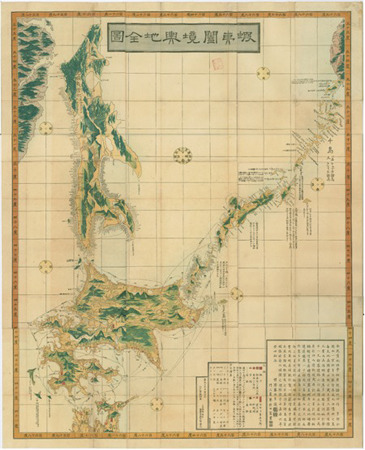


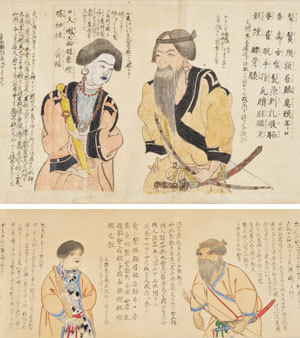
Capítulo 1: Introducción a los Emishi. Sean bienvenidos amantes del mundo japonés a una nueva publicación, en esta ocasión vamos a hablar sobre los emishi dicho esto pónganse cómodos que empezamos. - Para empezar, el término emishi hace referencia a todas las tribus y pueblos que vivían y que todavía viven al norte de Japón es decir la mitad norte de Tohoku, incluida hokkaido a este pueblo se le denominaba y se le denomina todavía a día de hoy Ainu, considerados los primeros pobladores del archipiélago a lo largo del siglo XVI hubo una serie de campañas militares para controlar dicho territorio aunque ya en el siglo VII siglo VIII después de Cristo durante el apogeo del clan yamato crearon una serie de fortalezas al norte para mantenerlos a raya. De hecho eran denominados bárbaros del norte que además se revelarán en más de una ocasión bajo el dominio japonés sin resultado alguno, actualmente se les da un reconocimiento a esta cultura, que en el pasado no lo tuvieron, como por ejemplo hay un museo dedicado a ellos y a su cultura. - Espero que os haya gustado y nos vemos en próximas publicaciones que pasen una buena semana. - 第 1 章: 蝦夷の紹介。 日本世界を愛する皆さん、新しい出版物にようこそ。今回は蝦夷について話します。とはいえ、気を楽にして始めましょう。 - まず、蝦夷という用語は、日本の北、つまり北海道を含む東北の北半分に住んでいた、そして今も住んでいるすべての部族と民族を指し、この民族は現在もアイヌと呼ばれていると考えられています。 16 世紀を通じてこの列島に最初に定住した人々は、その領土を支配するために一連の軍事作戦を行ったが、すでに 7 世紀から 8 世紀にはヤマト氏の全盛期に、彼らは北に一連の要塞を築き、領土を維持していた。湾。実際、彼らは北の野蛮人と呼ばれていましたが、日本の統治下でも何の成果も得られずに何度も姿を現しましたが、現在では、この文化は、例えば、そこでは過去にはなかった認識を与えられています。は彼らとその文化に特化した博物館です。 - 気に入っていただければ幸いです。今後の投稿でお会いしましょう。良い一週間をお過ごしください。 - Chapter 1: Introduction to the Emishi. Welcome lovers of the Japanese world to a new publication, this time we are going to talk about the emishi, that being said, make yourself comfortable and let's get started. - To begin with, the term Emishi refers to all the tribes and peoples who lived and still live in the north of Japan, that is, the northern half of Tohoku, including Hokkaido. This people was called and is still called Ainu today. , considered the first settlers of the archipelago throughout the 16th century there were a series of military campaigns to control said territory although already in the 7th century 8th century AD during the heyday of the Yamato clan they created a series of fortresses to the north to keep them at bay. stripe. In fact, they were called barbarians of the north who also revealed themselves on more than one occasion under Japanese rule without any result. Currently, this culture is given recognition, which in the past they did not have, such as, for example, there is a museum dedicated to them and their culture. - I hope you liked it and see you in future posts, have a good week.


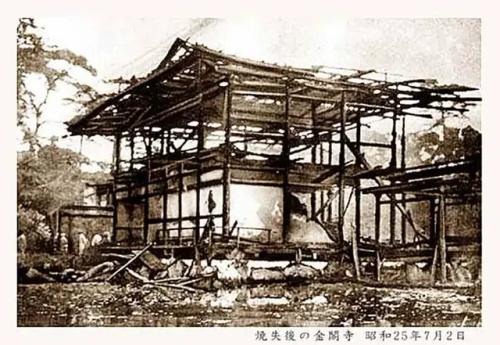
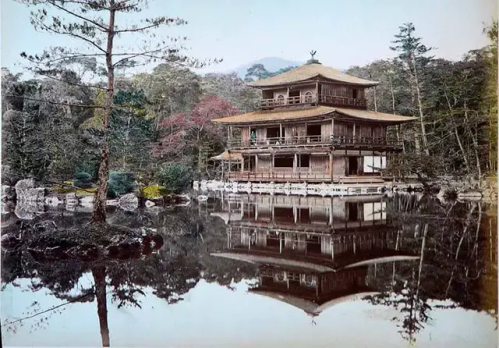



Sean bienvenidos, japonistasarqueologos, a una nueva entrega, cultural-artística vamos a hablar sobre Kinkaku-ji una vez dicho esto pónganse cómodos que empezamos. - El kinkaku-ji se localiza en la ciudad de Kyoto, en la prefectura de Kanto. Kyoto fue una de las dos grandes capitales del Japón feudal porque su otra ciudad de gran peso fue Nara, pero eso es otra historia. - El Kinkaku-ji, fue construido en el siglo XIV, el que se ve actualmente es una reconstrucción porque el original se destruyó en un incendio en 1950 y el actual data de 1980 aproximadamente ya en 1880 perdió su revestimiento de pan de oro, fue La residencia de Ashikaga yoshimitsu tras su muerte lo donó a la orden religiosa y pasó a ser un templo budista. - Espero que os guste y nos vemos en próximas publicaciones. Fuentes de foto: https://blogukiyoe.es/kinkaku-ji-en-el-ukiyo-e wikipedia - Welcome, Japanese archaeologists, to a new cultural-artistic installment, we are going to talk about Kinkaku-ji. Once that has been said, make yourself comfortable and we will begin. - Kinkaku-ji is located in the city of Kyoto, Kanto prefecture. Kyoto was one of the two great capitals of feudal Japan because its other major city was Nara, but that is another story. - The Kinkaku-ji was built in the 14th century, the one currently seen is a reconstruction because the original was destroyed in a fire in 1950 and the current one dates from approximately 1980 and in 1880 it lost its gold leaf coating, it was La residence of Ashikaga Yoshimitsu after his death he donated it to the religious order and it became a Buddhist temple. - I hope you like it and see you in future posts. Photo sources: https://blogukiyoe.es/kinkaku-ji-en-el-ukiyo-e Wikipedia - 日本の考古学者の皆さん、新しい文化芸術の回へようこそ。金閣寺についてお話します。それが終わったら、落ち着いてから始めましょう。 - 金閣寺は、関東県京都市にあります。京都は、もう一つの主要都市が奈良であったため、封建時代の日本の二大首都の一つでしたが、それはまた別の話です。 - 金閣寺は 14 世紀に建てられ、現在見られるものは再建されたものです。オリジナルは 1950 年の火災で焼失し、現在のものは 1980 年頃のもので、1880 年に金箔のコーティングが失われ、ラ邸でした。足利義満の死後、教団に寄進され仏教寺院となった。 - 気に入っていただければ幸いです。今後の投稿でお会いしましょう。 - 写真出典: https://blogukiyoe.es/kinkaku-ji-en-el-ukiyo-e ウィキペディア






Sean bienvenidos japonistasarqueológicos, a una nueva entrega de arqueología japonesa, una vez dicho esto pónganse cómodos que empezamos. - Hoy nos trasladamos a las ruinas que se localizan, en la ciudad de Sagamihara, se localiza en la prefectura de Kanagawa, su situación geográfica es la región de Kanto ¿De qué periodo se trata? Se trata del período Jomon, este período estaría dentro del paleolítico. - Las primeras intervenciones arqueológicas se realizaron en 1973 para la construcción de la Ruta 129, se levantaron aproximadamente 18.000 metros cuadrados en el lado este del asentamiento circular, en dicho yacimiento se han descubierto 51 nuevas viviendas en pozos y otros restos y reliquias. - En el emplazamiento se han descubierto 51 nuevas viviendas en pozos y otros restos y reliquias, la vivienda de pozo más grande de la ciudad con un diámetro de 9 m, hay una vivienda con muchas capas de ranuras alrededor del perímetro, y se explica que ha sido reconstruida y utilizada durante varias generaciones. - 日本の考古学者たちよ、ようこそ。そう言われたら、くつろいで、さっそく始めましょう。 - 今日は神奈川県相模原市にある遺跡を紹介します。 時代は?縄文時代です。この時代は旧石器時代にあたります。 - 1973年に国道129号線建設のために初めて考古学的発掘調査が行われ、円形集落の東側で約18,000平方メートルが発掘された。遺跡からは、ピット内の51の新しい住居やその他の遺跡や遺物が発見された。 - 敷地内では新たに51基の竪穴式住居やその他の遺跡・遺物が発見され、市内最大の直径9mの竪穴式住居には、周囲に何層もの溝を持つ住居があり、数世代にわたって改築・使用されてきたことが説明されています。 - 気に入っていただけたなら幸いです。今後の記事でお会いしましょう。良い一週間をお過ごしください。 -
Welcome to Japanesearchaeology, to a new installment of Japanese archaeology. Having said that, make yourself comfortable and let's begin.
-
Today we move to the ruins that are located in the city of Sagamihara, located in the Kanagawa prefecture, its geographical location is the Kanto region. What period is it? This is the Jomon period, this period would be within the Paleolithic.
-
The first archaeological interventions were carried out in 1973 for the construction of Route 129, approximately 18,000 square meters were built on the east side of the circular settlement, at this site 51 new homes have been discovered in wells and other remains and relics.
- 51 new well dwellings and other remains and relics have been discovered at the site, the largest well dwelling in the city with a diameter of 9 m, there is a dwelling with many layers of grooves around the perimeter, and it is explained that it has been rebuilt and used for several generations.
Sean bienvenidos japonitasarqueologicos, a un nuevo especial ya somos 2400 seguidores mil gracias por el apoyo y para agradeceros os traigo una de las leyendas más icónicas de Japón dicho esto pónganse cómodos que empezamos. - ¿Qué significa Sakura? Significa Cerezo en flor, seguramente os suene el nombre por algún que otro personaje de anime como: Sakura cazadora de cartas o en la película llamada comerme tu páncreas. - ¿Cómo surgió está leyenda? Todo comienza, en un Japón que está desolado por las guerras y horrores de los seres humanos, nuestro personaje se localiza en un bosque donde hay un árbol al cual no le florecían las flores, los animales ni la hierba por el mal que emanaba de él. - Un día un hada se compadeció de él y le concedió el poder de transformarse en hombre durante 20 años para poder encontrar el amor pero no fue así lo único que vio fue horror. Cuando le quedaba poco tiempo seguía sin florecer en lo que respecta como árbol y como humano. Un día en la orilla del río se deslumbró al ver a Sakura y se enamoró de ella. Llegó el día en el que se transformó en árbol y Sakura abrazó el árbol, le confesó su amor el hada tenía dos opciones adherirse al Yohiro o no pero viendo los horrores del mundo decide fusionarse con él. - Esta leyenda está ligada a una de las festividades más importantes de Japón que se llama Hanami durante una semana los japoneses contemplan la flor de Sakura en todo su esplendor. Esto fue un símbolo para los Kamikazes durante la 2ww y para los samuráis que lo consideraban con la sangre. - Espero que os haya gustado el especial y nos vemos en próximas publicaciones de Arqueología japonesa. Un cordial saludo. - 日本考古学へようこそ。フォロワー数が 2,400 人になりました。ご支援いただき、ありがとうございます。そうは言っても、安心して始めましょう。 - さくら とはどういう意味ですか?桜という意味です。カードハンターさくらや映画「君の膵臓をたべます」などのアニメのキャラクターでこの名前をよくご存じでしょう。 - この伝説はどのようにして生まれたのでしょうか?すべては、戦争と人間の恐怖によって荒廃した日本で、私たちのキャラクターは、そこから発せられる悪のために花、動物、草が咲かなかった木がある森にいます。 - ある日、彼を憐れんだ妖精が、愛を見つけるために20年間人間に変身する力を与えてくれましたが、そうではなく、彼が見たのは恐怖だけでした。 彼に残された時間がほとんどないとき、彼はまだ木としても人間としても成長していませんでした。ある日、彼は川岸で桜を見て幻惑し、恋に落ちました。彼が木に変身する日が来て、サクラは木に抱きつき、愛を告白しました。妖精には2つの選択肢がありました。ヨヒロに従うかどうか。しかし、世界の恐ろしさを見て、彼女は彼と融合することを決めました。 - この伝説は、花見と呼ばれる日本で最も重要なお祭りの 1 つと結びついており、日本人は 1 週間にわたってその素晴らしさを満喫する桜の花を鑑賞します。これは、第二次世界大戦中の特攻隊と、それを血をもって考えた武士たちの象徴でした。 - この特集を気に入っていただければ幸いです。今後の日本考古学の出版物でお会いしましょう。心のこもった挨拶。 - Welcome japonitasarqueologicos, to a new special we are already 2400 followers thank you very much for the support and to thank you I bring you one of the most iconic legends of Japan that said make yourselves comfortable we begin. - What does Sakura mean? It means Cherry Blossom, surely you know the name from some other anime character like: Sakura card hunter or in the movie called eat your pancreas. - How did this legend come about? It all begins, in a Japan that is devastated by wars and horrors of human beings, our character is located in a forest where there is a tree that did not bloom flowers, animals or grass because of the evil that emanated from it. - One day a fairy took pity on him and granted him the power to transform into a man for 20 years to be able to find love but it was not like that the only thing he saw was horror. When he had little time left, he still did not blossom as a tree or as a human. One day on the river bank he was dazzled by the sight of Sakura and fell in love with her. The day came when he transformed into a tree and Sakura hugged the tree, confessed her love to him, the fairy had two options to join Yohiro or not, but seeing the horrors of the world she decided to merge with him. - This legend is linked to one of the most important festivals in Japan called Hanami, during which the Japanese contemplate the Sakura flower in all its splendor for a week. This was a symbol for the Kamikazes during WWII and for the samurai who considered it to be blood. - I hope you liked the special and see you in future publications of Japanese Archaeology. Best regards.


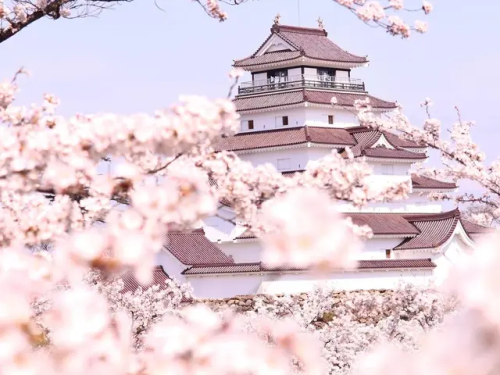

Sean bienvenidos, japonistasarqueológicos a una nueva entrega, en esta ocasión haré una introducción a que es la arqueología asistida a la arquitectura, una vez dicho esto pónganse cómodos que empezamos. - La arqueología, abarca muchos campos de estudios y épocas, desde la prehistoria hasta nuestro día, pero no estudia dinosaurios, lo siento, de eso se encarga la paleontología. En este caso, ¿Qué entendemos por Arqueología aplicada a la arquitectura?: pues atravez de sus restos arqueológicos nos permiten saber como eran las distintas arquitecturas de las distintas épocas. Por ejemplo: la arquitectura greco-romana y de la era vikinga, pero en este caso nos trasladamos al país del sol naciente y para que lo puedan entender mejor pongamos algunos ejemplos como las pagodas o edificios budistas e incluso casas de tipo foso en el periodo Jomon, solo por mencionar algunas cosas. - Gracias a esta disciplina y si la combinamos con la Arqueología 3D, pues el resultado es que con recreaciones virtuales o con la arqueología experimental nos permiten entender como se llevaron a cabo la labor de construcción y de abandono, etc. - Espero que os guste y nos vemos en próximas publicaciones, que pasen una buena semana. - Welcome, Japanese archaeologists to a new installment, this time I will make an introduction to what assisted archeology is to architecture, once said this, make yourself comfortable and let's start. - Archeology covers many fields of study and times, from prehistory to the present day, but it does not study dinosaurs, sorry, paleontology takes care of that. In this case, what do we understand by Archeology applied to architecture? Well, through its archaeological remains they allow us to know what the different architectures of the different eras were like. For example: Greco-Roman architecture and the Viking era, but in this case we move to the country of the rising sun and so that they can understand it better, let's give some examples such as pagodas or Buddhist buildings and even moat-type houses in the period Jomon, just to mention a few things. - Thanks to this discipline and if we combine it with 3D Archaeology, the result is that with virtual recreations or with experimental archeology they allow us to understand how the construction and abandonment work was carried out, etc. - I hope you like it and see you in future publications, have a good week. - 日本の考古学者の皆さん、新しい記事へようこそ。今回は、建築に対する考古学支援とは何かについて紹介します。これを言ったら、安心して始めましょう。 - 考古学は先史時代から現代に至るまで、多くの研究分野と時代をカバーしますが、恐竜については研究しません。申し訳ありませんが、古生物学がそれを担当します。 この場合、考古学を建築に適用すると、私たちは何を理解できるのでしょうか? そうですね、考古学的遺跡を通じて、さまざまな時代のさまざまな建築がどのようなものであったかを知ることができます。 例: ギリシャ・ローマ建築とバイキング時代。この場合は日出ずる国に移ります。理解が深まるように、塔や仏教の建物、さらには堀型の家などの例を挙げましょう。縄文時代のことについて少しだけ触れておきます。 - この専門分野のおかげで、これを 3D 考古学と組み合わせると、仮想レクリエーションや実験考古学を使用して、建設や放棄作業がどのように行われたのかなどを理解できるようになります。 - 気に入っていただければ幸いです。今後の出版物でお会いできることを願っています。良い一週間をお過ごしください。


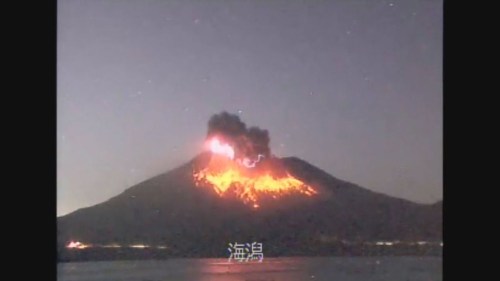

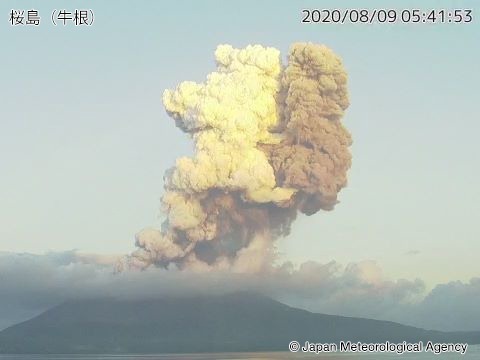
Sean bienvenidos japonítasarqueológicos a una primera noticia de geografía japonesa, espero que os guste dicho esto comenzamos. - En la isla de Kyuchu se localiza el volcán Sakurajima que está en la ciudad de Kagoshima. Entró en erupción el pasado 25 de julio, por suerte se están evacuando a la población de los alrededores. - Japón es un país que está a la orden del día en lo que respecta al tema vulcanológico. Espero que os haya gustado y nos vemos en próximas noticias de arqueología e historia japonesa. - 考古学ジャポナイトは日本の地理の最初のニュースを歓迎します、私はあなたがそれを好きであることを願っています、これを言って、始めましょう。 - 九州の桜島火山は鹿児島市にあります。 7月25日に噴火し、幸い周囲の人々は避難している。 - 日本は火山学に関して議題になっている国です。 あなたがそれを気に入って、将来の考古学と日本の歴史ニュースであなたに会えることを願っています。 - Archaeological Japonites are welcome to a first news of Japanese geography, I hope you like it, having said this, let's start. - On the island of Kyuchu, the Sakurajima volcano is located in the city of Kagoshima. It erupted on July 25, luckily the surrounding population is being evacuated. - Japan is a country that is on the agenda when it comes to volcanology. I hope you liked it and see you in future archeology and Japanese history news.




Sean bienvenidos japonistasarqueologicos a una nueva entrega, esta ocasión os hablaré del castillo de Takeda dicho esto pongase comodo que empezamos. - El castillo, se localiza en la ciudad de Asago, prefectura de Hyogo, data del siglo XV del periodo Muromachi, en este periodo podemos encontrar el clan del shogun Ashikaga, fue construido por Sozen Yamana, el daimyo de la provincia. - Entre sus Restos podemos encontrar : Muros de piedra, fosos, pozos , también fue escenario de la batalla entre el ejército de Hidenaga Hashiba y el ejército de Terunobu Otagaki. - ¿Dónde se localiza el castillo Takeda? Se localiza en el monte Kojo, Oda Nobunaga derrotó al castillo con su ejército en varias ocasiones en el siglo XVI, mientras que Hideyoshi Hashiba tomaba el castillo de Ueda, su hermano pequeño Hidenaga Hashiba condujo a 3000 soldados al castillo de Takeda y marchó desde el paso de Mayumi hasta Tajima , el 28 de octubre de 1600 el castillo takeda fue abandonado. - Espero que os haya gustado y nos vemos en próximas publicaciones de Japón que pasen una buena semana. - 日本の考古学者を歓迎します。今回は竹田城についてお話ししますので、楽にしていてください。 - 兵庫県朝来市にあるこの城は、15世紀の室町時代に遡り、この時代には将軍足利氏の一族を見出すことができ、県内大名の山名宗全が築城したものである。 - 羽柴秀長軍と太田垣輝信軍の戦いの舞台にもなった。 - 竹田城はどこにあるのですか?古城山に位置し、16世紀には織田信長が何度も軍を率いて城を破り、羽柴秀吉が上田城を手に入れる一方、弟の羽柴秀長が3000人の兵を率いて竹田城に入り、真弓峠から但馬に進軍、1600年10月28日に竹田城は放棄された。 - また、次の記事でお会いしましょう。 - Welcome Japanese archaeologists to a new installment, this time I will tell you about Takeda Castle, so make yourself comfortable and let's get started. - The castle, located in the city of Asago, Hyogo prefecture, dates back to the 15th century Muromachi period, in this period we can find the clan of the shogun Ashikaga, it was built by Sozen Yamana, the daimyo of the province. - Among its remains we can find: stone walls, moats, wells, it was also the scene of the battle between the army of Hidenaga Hashiba and the army of Terunobu Otagaki. - Where is Takeda Castle located? It is located on Mount Kojo, Oda Nobunaga defeated the castle with his army several times in the 16th century, while Hideyoshi Hashiba took Ueda castle, his younger brother Hidenaga Hashiba led 3000 soldiers to Takeda castle and marched from Mayumi pass to Tajima, on 28 October 1600 Takeda castle was abandoned. - I hope you liked it and see you in the next Japan posts have a nice week.
-
 girlygo2 liked this · 5 months ago
girlygo2 liked this · 5 months ago -
 atomicangelfest liked this · 7 months ago
atomicangelfest liked this · 7 months ago -
 bear-pattern-hamster liked this · 9 months ago
bear-pattern-hamster liked this · 9 months ago -
 rfpreiwaphase liked this · 10 months ago
rfpreiwaphase liked this · 10 months ago -
 repera23 liked this · 10 months ago
repera23 liked this · 10 months ago -
 originalpandahoagieoperator liked this · 11 months ago
originalpandahoagieoperator liked this · 11 months ago -
 derdutch liked this · 1 year ago
derdutch liked this · 1 year ago -
 oc45 liked this · 1 year ago
oc45 liked this · 1 year ago -
 locksmiths-holiday reblogged this · 1 year ago
locksmiths-holiday reblogged this · 1 year ago -
 dutchs-blog liked this · 1 year ago
dutchs-blog liked this · 1 year ago -
 babylon-iraq-baghdad liked this · 1 year ago
babylon-iraq-baghdad liked this · 1 year ago -
 rorydbe liked this · 1 year ago
rorydbe liked this · 1 year ago -
 thelostdreamsthings liked this · 1 year ago
thelostdreamsthings liked this · 1 year ago -
 hopefulkidshark liked this · 1 year ago
hopefulkidshark liked this · 1 year ago -
 adam-trademark liked this · 1 year ago
adam-trademark liked this · 1 year ago -
 yusuf-krk liked this · 1 year ago
yusuf-krk liked this · 1 year ago -
 dgfmaurizio liked this · 1 year ago
dgfmaurizio liked this · 1 year ago -
 corse2b liked this · 1 year ago
corse2b liked this · 1 year ago -
 gerda-p liked this · 1 year ago
gerda-p liked this · 1 year ago -
 vestaignis liked this · 1 year ago
vestaignis liked this · 1 year ago -
 rodolfo9999 liked this · 1 year ago
rodolfo9999 liked this · 1 year ago -
 suenosyfantasmas liked this · 1 year ago
suenosyfantasmas liked this · 1 year ago -
 110car8s liked this · 1 year ago
110car8s liked this · 1 year ago -
 love-in-tongue liked this · 1 year ago
love-in-tongue liked this · 1 year ago -
 becoming--nobody liked this · 1 year ago
becoming--nobody liked this · 1 year ago -
 aquagradient liked this · 1 year ago
aquagradient liked this · 1 year ago -
 misterio-m liked this · 1 year ago
misterio-m liked this · 1 year ago -
 spayki liked this · 1 year ago
spayki liked this · 1 year ago -
 balluprojects liked this · 1 year ago
balluprojects liked this · 1 year ago -
 alaskaenmelena liked this · 1 year ago
alaskaenmelena liked this · 1 year ago -
 yoga-onion liked this · 1 year ago
yoga-onion liked this · 1 year ago -
 justinrichards2001land reblogged this · 1 year ago
justinrichards2001land reblogged this · 1 year ago -
 justinrichards2001land liked this · 1 year ago
justinrichards2001land liked this · 1 year ago -
 hgc211hiro liked this · 1 year ago
hgc211hiro liked this · 1 year ago -
 myxbxsidexlifexfourxseasons liked this · 1 year ago
myxbxsidexlifexfourxseasons liked this · 1 year ago -
 masahirov reblogged this · 1 year ago
masahirov reblogged this · 1 year ago -
 shi-npon liked this · 1 year ago
shi-npon liked this · 1 year ago -
 nessieac liked this · 1 year ago
nessieac liked this · 1 year ago -
 gt-x325 reblogged this · 1 year ago
gt-x325 reblogged this · 1 year ago -
 m-3x-m liked this · 1 year ago
m-3x-m liked this · 1 year ago -
 michitakao liked this · 1 year ago
michitakao liked this · 1 year ago -
 blaqkpen liked this · 1 year ago
blaqkpen liked this · 1 year ago

238 posts
